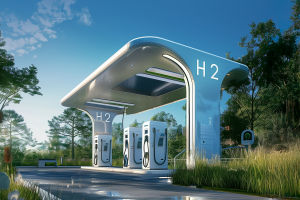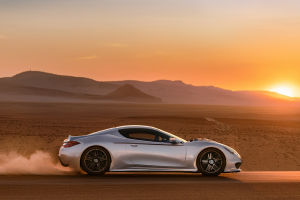Lykkers, choke on exhaust fumes during your daily errands? Imagine streets humming with whisper-quiet, zero-emission runabouts. Enter Neighborhood Electric Vehicles (NEVs) – compact electric heroes engineered for short hops under 35 mph.
Born partly from California's Zero Emission Vehicle (ZEV) mandate, these aren't golf carts. They're NHTSA-certified low-speed vehicles poised to detoxify urban jungles.
What Defines NEVs
Think local, think efficient. NEVs are federally approved for roads with 35 mph speed limits – perfect for downtown grids, gated communities, and sprawling college campuses. While meeting strict NHTSA safety standards (lights, seat belts, VIN), states can tweak rules. This flexibility lets cities tailor NEV access, creating car-lite zones where these emission-free workhorses thrive.
Early Sparks Fade
The late 1990s saw a surge! Carmakers eyed NEVs as affordable ZEV compliance tools. Pilot programs bloomed, showcasing potential. Yet, mainstream adoption stalled. Charging fears? Range anxiety? Despite hurdles, the core promise – slashing urban emissions – never dimmed.
Real-World Proof
Hard data arrived in 2002. Chula Vista, California became a living lab. A study was launched by an institute and a car company within Otay Ranch's Heritage Village – a 7,000-home master-planned community. For 60 days, families swapped keys for electric vehicles, documenting every milk run and coffee dash.
Stunning Trip Shift
The results electrified observers. 89% of short trips – those under 10 miles – saw residents choose the NEV over their gasoline sedans. Think school drop-offs, pharmacy dashes, quick grocery grabs. Crucially, NEVs replaced walking just 8% and biking only 3%. They became the go-to errand chariot, not a fitness deterrent.
Purpose Revealed
Where did these silent sprinters go? Business & delivery dominated at 49% – think commuting to local jobs or hauling parcels. Leisure cruises followed at 34%, proving fun needn't pollute. The remaining 17% covered essential odds-and-ends. Over half the families wanted to buy their NEV post-trial – a powerful endorsement.
Emission Victory
Every mile driven meant less CO2, NOx, and particulates poisoning city air. Unlike idling SUVs in drive-thrus, NEVs sip energy cleanly. This pilot quantified a truth: swapping countless short gas trips for NEV runs creates tangible air quality gains, block by block.
Community Blueprint
Otay Ranch designed streets for people, not just cars. Integrating NEVs supported this sustainable vision. Reduced traffic congestion, calmer neighborhoods, cleaner lungs – the benefits stacked up. The study also revealed resident needs: desire for dedicated NEV parking, easy charging points, and clear neighborhood access routes.
Industry Insight
David Cole, automotive expert, noted: "Low-speed electric vehicles offer a viable solution for urban mobility if integrated into community planning."
Modern NEV Potential
Today's tech boosts the case. Modern lithium-ion batteries offer longer range and faster charging. Solar roofs could extend zero-emission miles. Imagine NEV sharing hubs near transit stations, or fleets for campus security and local deliveries. Their tiny footprint eases parking crunches.
Global Urban Solution
From European city centers to Asian megacities, the NEV model translates. Dense urban cores, plagued by tailpipe toxins and noise, need scalable solutions. NEVs offer immediate relief without massive infrastructure – just accessible 120V outlets.
Beyond California
While Chula Vista led, NEV-friendly policies are sprouting. Florida retirement communities buzz with them. Resort islands restrict gas vehicles, favoring NEVs. University towns deploy them for staff transit. Each success builds the blueprint.
Consumer Shift Needed
The biggest hurdle? Perception. NEVs aren't "lesser cars"; they're right-sized tools for predictable, local travel. Embracing them means valuing clean air and community calm over horsepower vanity. It's choosing the smart scalpel over the gas-guzzling sledgehammer.
Path Forward
City planners must designate NEV zones and install curbside charging. Developers can embed NEV lanes in new projects. Policymakers should offer incentives, mirroring early EV adoption support. The Otay Ranch data provides the playbook.
Silent Revolution Grows
Lykkers, the hum of NEVs is the sound of urban lungs healing. That 89% swap rate screams potential. Imagine school zones free of diesel fumes, main streets where conversation replaces engine roar. NEVs deliver tangible emission cuts today, not in 2030. Choosing them for the school run, the post office dash, the coffee sprint isn't sacrifice – it's liberation. The quiet revolution starts in your neighborhood. Will you join the drive toward cleaner, calmer streets? The key is already turned.


